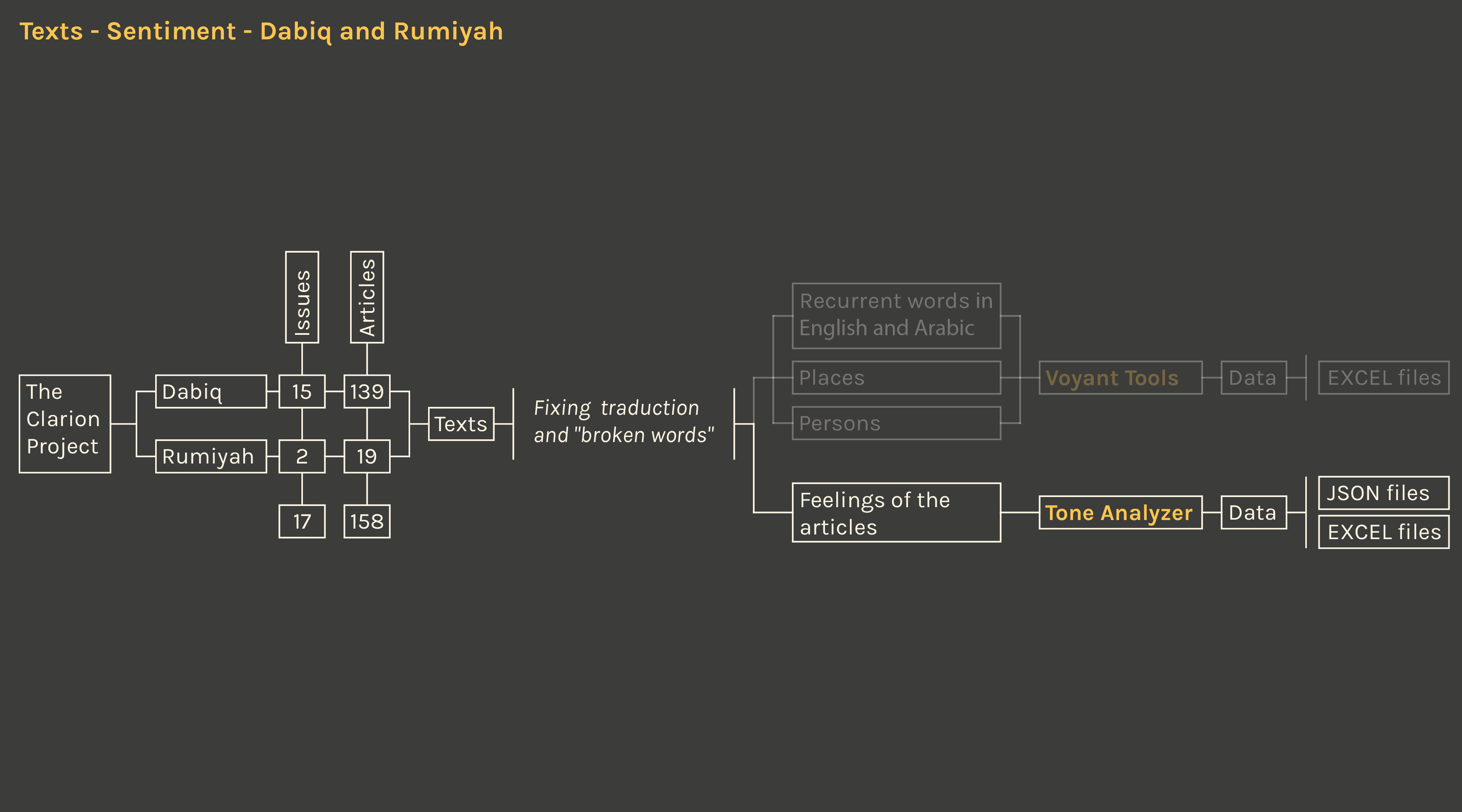Description
In this visualization, the sentiment of the articles of the official magazines by the IS, Dabiq and Rumiyah, are analysed. For each issue, all the articles are ordered chronologically. The height of the bar is determined by the length of the article measured in number of words. The color corresponds to the prevailing sentiment assigned by IBM’s Tone Analyzer after the extraction of text. To verify the accuracy of sentiment assignment, we manually checked a few random articles of the magazines and compared our results. The results were compatible so we felt confident enough to keep the results returned by the tool.
The two sentiments most present are sadness and fear. It is important to state that fear in this context it is not suffered by the IS but instead it is the fear that the IS itself wants to spread over the Western world.
Additionally, to compare the overall decreasing length of the text in the articles of the magazines (Note: the first six numbers of Dabiq have 5-7 articles, from issue #7 to #15 the number of articles doubles while the length of the magazine maintains the same number of pages) in a second analysis we considered also the number of images used in every edition of the magazines. What one can infer is that while the length of text decreased in time, the number of images used increased simultaneously. This could be in accord with the thesis of the IS being very much aware of the importance of media communication, treating visual content with privileged attention on its magazines.


